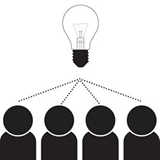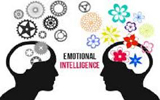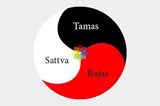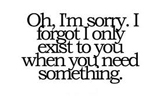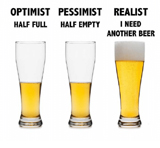Emotional Health
Emotional Literacy Training
Abstract
This essay adds practical details to the article, ‘An Emotional Literacy Programme’, that was printed in the previous issue. It lists topics that will be covered sequentially and as classroom activities for each topic. Clippings from films and excerpts from books are used to illuminate concepts. Case studies will be analysed and situations will be presented around which participants will model interactions. Role-playing will be used to internalise the training. This is a blueprint for an emotional literacy training programme for any community. It can be modified for specific groups such as nurses, teachers, lawyers or parents. This article being a sequel to the first, will not explain the meanings of concepts that were presented there, but will use the terms as though the reader understands them. Each topic can be taught over several sessions, and each group can decide if they want to dive deeper into some of them.
Topic 1: why we are here at this training
We are assailed by forces that shape us at every moment. And we give back something of ourselves to this sum of forces that shapes everything else around us. Given this complex and constant exchange, it is a wonder that we maintain a sense of self. That is why in the beginning the ego plays a large part in our lives. As we mature, we free ourselves of its insecurities, and mingle with others without feeling threatened. And yet, our existence in society is anything but smooth. A lot of it baffles us; a lot gives us pain. That is why we are here together, to try to understand the underlying forces that surround us.
Through this training we hope to know ourselves better and be inspired to negotiate life’s journey better. Since we cannot escape others and their influences on us, and ours on them, we would like to know others better too. The collective’s progress and the individual’s progress are linked closely. When we reach a harmony with others, our personal journeys are smoother and at the same time we can turn around and help others.
Before we start, let us discuss two codes of conduct. This training is for collective betterment and so, mutual respect is our number one goal. Subsequent goals will be to love one another and to feel unity and harmony. And also have fun learning. Our main topic in this training is emotions — individual and inter-personal. Sometimes you may want to share a personal experience or a conflict in your relationship. We would like to think about these together and try to find a solution. But we do not want to think badly of anyone. So it is best not to mention names, but to just state the traits that are pertinent to the discussion. Another request to participants is that none of the personal stories be repeated outside of the classrooms, since it may embarrass the persons involved. Participants may discuss if they would like to add to these rules for their group.
Here are some learning-aids: journaling and goal-setting. Writing down what you have learnt is common knowledge, and we all know how it works to refresh our memories. But writing down here is crucial to our progress. The power of intention is like warming up before a race, so write down what you would like to achieve. You can be as precise as possible by using exact numbers and dates. For example, in two months you want to reduce your anger outbursts by half. Or it can be qualitative, like you want to focus on listening for as long as it takes you to master it. This journal is also helpful in writing down action plans. These are concrete behaviour goals you want to implement. Suppose you want to drink more water, your action plan may be to keep a note of how many glasses you drink in a day. Teaming up with others to remind each other, or keeping count for each other, is a good plan too. Every two months we will reflect on how the training is going and if we want to make changes to it.
Topic 2: Emotional Intelligence
Sherlock Holmes awoke Watson and asked him,
“Watson, what do you see?”
Watson looked up and said, “I see a beautiful starry night.”
“And what do you conclude from it?”
“That it will not rain tonight. What about you?”
“That someone has stolen our tent.”
Now we will all be detectives, not romantics, and try to guess the emotions of people we see in these clippings. The clippings are emotionally charged but do not have too many conversations. Participants have to guess the background story of the scene and explain why the actors behave as they do, what they feel, overtly and covertly. Each participant gets a chance to speak. We will discuss choice of words, body language and postures.
Role-playing is an important tool for self-healing. Behaviours can change our attitudes, and attitudes can change our beliefs. The Behaviourist school of thought endorses this through countless experiments. Cognitive therapists start from the other end and say thoughts create shifts in behaviour. Both are true. A pattern may work for a certain person in a certain situation, but another pattern may be needed elsewhere. We will use them both to our advantage.
There is a take-home project that participants will have to present in the following session. In the next session we will discuss various kinds of emotions. Each one will act out their emotions, and others will guess it. The actor can use his face alone, or his entire body, or some prop, or use someone else, or read out some conversation. Each one should prepare at least one subtle emotion in addition to common ones.
We will start the session by presenting the performance of emotions that was the homework from the last session. Each one gets a chance to guess the emotion presented. We will then discuss differences of opinion. For children this can be done in teams and each team gets a point when they answer it correctly and act it out well. Depending on the age-group, the range of emotions can vary. Participants should be encouraged to come up with complex emotions and explain where they have read about it or experienced it. Some examples are: I know you have seen through me. I agree but cannot say it aloud. Your doubting me does not hurt me.
Next we will see some clippings from films where actors display social intelligence. We will also read from literature where emotional intelligence is displayed. We will then discuss how we would feel and react were we in the position of the characters.
Topic 3: why we are what we are
Many factors make us what we are — our genes, our upbringing, our micro-culture, our culture, the epoch in which we live, the people in our lives, our personal preferences, what motivates us. The gifts we are born with are called nature, the rest are nurture. The line between the two is blurred as studies of epigenetics have shown. Genes switch on and off depending on circumstances in life. They are now viewed as propensities and probabilities, not certainties. The same is true of our nurture. It has been observed that babies who were not touched by their mothers and not talked to, in other words not loved adequately, grow up with stunted emotions and avoid human contact. This is only partially true, because although the baby is primed to show such behaviour, she can break away from this pattern. Conversely, even though she had a secure childhood, she may have depressions later in life.
The biology of who we are is determined primarily by hormones, neuro-transmitters and how they affect our nervous system. When people touch each other, both secrete the hormone oxytocin, which produces contentment. This lasts up to four minutes. Repeated touch creates a circuit in the brain and the neural pathway is laid, like laying telegraph cables under the ground. These people feel safe and can give attention to others from their vantage point of security. People who do not have enough human contact may become lonely, inhibited, shy, and avoiding others. Other people make them feel stressful and stress hormones create the opposite of well-being in the body. They prepare it for fight or flight. The immune system’s lymphocytes are produced less and cells deplete faster, reducing the lifespan of the individual. Children with Adverse Childhood Experiences (ACEs) or trauma victims, function under high stress. The involuntary triggering of unpleasant memories is called PTSD — Post-Traumatic Stress Disorder. People who live selfishly also have high stress hormones. Loneliness is not measured by the quantity of contacts, but the quality of relationships. Our moods are affected by a host of factors: our environment, when last we exercised, what film, book, music, conversation is re-playing within, what’s the weather like, if we are sick, what is preoccupying us, and so on.
Our natural tendencies are driven by the three modes of nature — sattva, rajas, tamas — illumination, kinesis, inertia. We are a mix of these, showing more of one or the other in different parts of our being. We may rebel against social injustice but be too lazy to cook food for ourselves. Our aim would be to purify rajas and tamas and make sattva their leader, so that we understand with a broad mind and love with an open heart. This too would be a stepping-stone. The final goal is to lead a divine life.
There are some positive shifts in society. Gross National Happiness may replace Gross Domestic Product. Leaders are taking compassionate leadership training. Medical curricula have now a course on treating patients empathetically. School counsellors dealing with troubled students send their parents to socially intelligent parenting classes. Neighbourhoods are coming together to do projects such as helping a family in trouble, childcare, gardening. Healers gather to provide healing to each other. Nurses have meetings discussing challenges they face at work. All these person-to-person interactions enhance the quality of our lives and increase our social safety-net.
Interpersonal relations have been studied from various angles. Neurologists talk about mirror neurons. When we see an emotion being expressed, we feel just like the person experiencing it. Those who study energies and the aura explain it in terms of energetics of interaction. Telepathy, or prākāmya and vyapti are Tantric terms for it. We enjoy a game vicariously, we cry with the actors in a film. A person may trigger memories which alter our mood. Mirror neurons have been used to cure Obsessive Compulsive Disorders of washing hands and phantom limb pains. We will hear a talk which makes us sad. We will see a picture of a sad face. Then we will see a clipping of a sad scene. We will compare how we mirrored the feelings when it came to us from different sense organs. We will compare how we mirror different emotions.
Topic 4: why we misread people
Our mind is not an instrument of holistic knowledge. Thus we read people’s thoughts and feelings wrongly. The mind cannot even regulate our own behaviour. We listen to our desires, the demands of others on us, the environment, the situation, a host of other things, and then commit an action. Only later do we justify them. Thus, it is said that man is not a rational being but a rationalising one. In this session we learn about the many pitfalls of our human nature. We will discuss examples of each and look at clippings on them.
1. Fundamental attribution error: linking someone’s actions to his disposition rather than to the situation.
2. Self-serving bias: we rate ourselves higher than what is true and set unrealistic goals for ourselves. The notion of ‘our self’ extends to our children and can be a bigger group too.
3. Implicit bias: our unconscious bias against people of different regions, languages, age-groups, religions, class, or gender, etc. We will explore ‘free association’ and the ‘implicit project’.
4. Explicit bias: our prejudices and discriminations. We look down upon some, do not give them a second chance, or we try to mask our prejudice by being patronising towards them.
5. Poor in reading micro-expressions: these are fleeting expressions that even seasoned maskers cannot hide. Sometimes we simply intuit them. Intuition here means subliminal sensing, not the function that is higher than the mind. Sometimes this snap-judgement centre in our brain makes the right decision. The rationalising part that inhibits impulses is the pre-frontal cortex, just behind the forehead, nature’s addition on homo sapiens.
6. The male and female brains have major differences. Females being child-bearers, are conditioned to socialise. The male brain drives alone better and thus takes on leadership roles. Women empathise better, but tend to worry about inter-personal interactions. The male hormone, testosterone, triggers aggression, which can be seen in the courtship rituals of horned animals.
Topic 5: anti-patterns
We will discuss behaviour patterns that one should avoid. Some of them have film clippings, some have snippets from stories. Some have full stories that illustrate a pattern. Participants should be encouraged to think of these patterns and come up with an example for each. In the next session each one will give his example, and the others will guess which pattern he is illustrating. Participants can choose to enact one or more of these patterns with someone else, or do it solo. They can write up some dialogue or share something they have read. Case studies of some of the patterns will be explored.
1. Selfishness: thinking, “What’s in it for me?” Deceptive, jealous, greedy, hating, taker, diminisher.
2. Abuse: psychological abuse of ridiculing, scolding, being indifferent. Physical abuse of beating and neglect.
3. Rationalisation: provide justification for our bad behaviour. For example, when we tease someone because ‘everyone else is doing it’ or because ‘he needs to develop resilience’.
4. Displacement: snap at someone safer to vent, when we cannot snap back at the aggressor.
5. Projection: a defence-mechanism where we imagine our weakness to be someone else’s and we attack this other person.
6. Groupism: ‘us’ versus ‘them’. The out-group’s members are de-personalised. Often no real contact is made with them. They are hated and made scapegoats. Their downfall makes the in-group happy. When someone feels rejected, they become angry, then aggressive.
7. Labelling and being judgmental: this social drag on a person gives him no second chance to prove himself to be different. He may feel frustrated and act out.
8. Power-play: how does a person in control behave with subordinates? Are they the ‘lick-up kick-down’ sort? Do they help their wards grow? Do they advise when not asked for? Are they patronising, controlling?
9. Attraction distortions: how are lovers treated? Controlling, needy, safe, inhibited, jealous, condescending? When a baby is safe with its mother, it grows up comfortable with others around him. If he is neglected, he grows up needy, inhibited. If the mother was anxious, she passes these states onto her baby. He will then be anxious, jealous, suspicious of his partner.
10. Anger and aggression: it was once thought that venting these feelings will act as catharsis. But the contrary occurs. It becomes addictive and the outbursts a habit. Just as addicts are asked to abstain, anger is also better bottled up. Anger causes stress within, which can be released with forgiving.
11. Group-think: groups do not think. None take responsibility for group actions. Some use the de-individuated state to act out vilely. Some become social loafers. They don’t contribute but hope to grab a share.
12. Authority: people follow an authoritative figure blindly, even if they are made to commit crimes. Consider the troops under any dictator. Their fear of power is greater than their compassion for fellow-creatures. We will discuss Stanley Milgram’s experiments.
13. Conformity: succumbing to peer pressure even at the cost of wrong-doing. This can be something harmless, like reading trashy novels, or harmful, like taking up smoking. We confirm depending on the consequences of not conforming, how prestigious the group is, how secure we feel alone, how many others think alike, if we did not commit to anything before. Individualistic Western cultures are less prone to conformity that Eastern collective cultures.
14. Comparing: each soul is unique and has come with a unique mission on earth. Comparing any two persons is hurtful, retrogressive. Comparing up makes us unhappy. Comparing down should make us grateful, but we seldom do it.
15. Not encouraging: keeping silent or being actually discouraging makes a person perform badly. Negative words and emotions have a dampening effect on the spirit.
16. Acting out emotions: destructive emotions like hatred should not be acted out. Instead verbalising them allows the other party to understand what you are feeling. Plus it gives time for the impulse to die out.
17. Punishment vs positive reinforcement: punishment is when an entitlement is withheld. Positive reinforcement is when a bonus is withheld. When a child is not given food, or is beaten for a bad behaviour, it is punishment. When he is told he will be given extra playtime if he behaves well, it is positive reinforcement. Rather than saying “No” to bad behaviour, a good behavioural pattern can be shown as an alternative.
18. Emotional reactions: enmeshed, over-whelmed, detached.
19. Overactive amygdala: when people look for angry faces all the time. Such people also imagine aggression where none exists and they lash out on these hunches. This behaviour is common in ACE victims.
Topic 6: our fundamental differences
We will discuss personality types and three commonly used schemes. The aim is to develop tolerance for people by understanding their constraints. Cultural diversity will also be studied with the same aim in mind. Different belief-systems drive attitudes and behaviours. Participants will reflect on the personality type of historical figures and fictional characters, for example, Che Guevara, Mother Theresa and Scrooge from A Christmas Carol. Participants will evaluate themselves against these schemes and may take personality tests. What types do we befriend easily? What types motivate us? Are there some other schemes that would work better for our society? What personality types describe rescue workers, spies, CEOs, musicians?
The first scheme in which people are categorised is called the ‘Big Five’. It says people have five axes in which their personality can vary. The mnemonic CANOE can be used for them.
Conscientiousness: disciplined or disorganised.
Agreeableness: helpful or uncooperative.
Neuroticism: secure or anxious.
Openness: imaginative or conforming.
Extraversion: extrovert or introvert.
The second scheme varies among four pairs of opposing propensities to form sixteen personality types. This was proposed by Carl Jung and developed by Isabel Briggs Myers. The four pairs are:
Introvert or Extrovert: I or E. This is how a person directs their energy. Intuitive or Sensing: N or S. This is how a person perceives. Intuitive people use their sixth sense. Sensing people use their objective sense organs.
Feeling or Thinking: F or T. This is how a person processes information. Feeling people understand others with respect to how they feel. Thinking people use logic.
Judging or Perceiving: J or P. This is how a person implements information. Judging people are organised and stick to their plans. Perceiving people decide on the fly.The various personality types are ESTJ, INFP and so on.
Dr Helen Fisher’s scheme says neuro-transmitters and hormones determine our personality types. When we are dominated by dopamine, we are Explorers — impulsive, curious, on the run. With testosterone, we become Directors — analytical, assertive, aggressive. With oestrogen/oxytocin we are Negotiators — trusting, generous, bonding. When driven by serotonin we are Builders — social, cautious, compliant.
The personality types described above do not have any value judgement attached to them. They are neither good nor bad, but reflect human diversity. In contrast, the behavioural classifications below have a distinct good or bad flavour to them.
Givers/takers/matchers: those who help, those who take help, those who help but expect the favour returned.
Optimists/pessimist: the glass half-full and half-empty people.
Maximisers/satisfiers: maximisers try to get the most from any situation. They can be perfectionists, never happy, ever regretting the choice they left out. But not weighing options makes them dissatisfied, so they are compelled to delay decision-making. Satisfiers make quick practical decisions and don’t look back at the options they left out. They know they have not optimised, so have not got the best, and they accept it. The lengthy decision-making process and perfectionism are stressful to them.
Multipliers/Diminishers: multipliers are those who enable others to perform their best. They motivate, provide support, step back when necessary. Diminishers discourage, remind others they are the best, withhold information, add roadblocks for others.
Participants will brainstorm on what the world would be if a certain personality trait were missing, say the rajasic nature, or the Intuitive people. We will go into practical details such as which social function would be missing, which profession would suffer the most. This will make us understand how it takes all sorts to make a world.
Topic 7: Inter-personal relationships
People we interact with affect us immensely. College roommates use the same phrases and expressions. Couples mirror each other’s feelings so well that the lines on their faces, created by emotions, are formed alike. When we are around happy people, we loop in and feel happy. Dissatisfied people make us feel depressed. What kind of vibrations do we send to others? We will share experiences of these sensations in our lives. We will do some tuning in exercises. We will study abrasive interactions and make improvements on them. Participants will act out interactions in different situations. They will see clippings of model interactions.
Next, we will discuss toxic relationships. These could be coming from abusive people, exploitative relationships and many others. These have profound effects on our well-being, starting from our moods down to the state of our bodily health. Hating them is like drinking poison and waiting for them to die. Toxic relationships flood the body with stress hormones that compromise the immune system and the functioning of major organs, like the heart. Children suffering from ACEs have a hard future ahead because they do badly in school and have more health issues.
But these adverse situations can awaken heroic qualities too. Victims develop resilience and strong emotional intelligence. They grow up to be leaders, healers, social activists. They have a psychological wall that can take blows and not crumble. They can empathise deeply and can sense a person’s troubles before a word is spoken. Meditation awakens the witness consciousness that can step back from life’s situations and provide the inner strength to bear it. But should toxic relations be borne if one can help it? Certainly not. Replace them with positive relations and avoid the toxic person if they cannot be reasoned with.
Three toxic personality types are defects that psychotherapists can address, but not disorders that can be treated with medicines. They are called the ‘Dark Triad’ — sociopaths, narcissists, Machiavellians. None of these people can empathise. Sociopaths are the most dangerous as they can commit fatal crimes but disguise their intentions. Narcissists have a huge ego that blinds them to the existence of others. In truth they are so insecure they need to prove constantly that they are the best. Machiavellians manipulate people and exploit their vulnerabilities without shame or guilt. All these types commonly do not admit their defects and will not change. Participants will reflect on historical figures who may have had a dark triad personality defect.
So, what should others do with such people? Case studies will be presented. We will learn techniques of self-defence — psychological and physical methods. Here are some ways to avoid such people without instigating them: do not make eye contact. Do not show yourself in frontal position. Do not tell them what you are feeling. Keep an object between the two of you, like a table, or even a book. Give vague answers that do not lead on the conversation. Pretend to be distracted, provide an excuse and slip out. Learning some form of martial art helps in dealing with physical blows. You will deflect the attack to save yourself, but not hit back to incite further blows.
Self-healing techniques help one focus away from toxic relationships. In addition to forming better relationships and taking good care of oneself, one supplies spiritual nourishment to oneself. The act of sharing, helping, teaching, any kind of altruism, even if mixed with selfishness, releases stress and produces happiness. When in a position of power, such as parents, teachers, nurses, doctors, we are blessed with a situation where we can influence someone else’s growth. When healing people who have not been given love in childhood, ahelper loops with their emotions and fulfils that need. The Heart Math Institute has a lot of helpful articles and recorded talks for building resilience. They have a game that helps people calm down.
We will do some role-playing now to influence our behaviours. For the next session each participant will choose a role they want to play. It can be a historical character or one they have created. They will enumerate the trait or traits they want to uphold. They will act out the role, and others will try to sense the atmosphere it creates. Those who are not confident about acting, can read out dialogues they have written. Then we will discuss how thinking about this personality and playing this role has influenced their mental state.
If participants would like to experience toxic relationships, film clippings can be shown and case studies can be discussed. This section can cause distress, so participants should feel free to skip this part of the training.
Topic 8: communication skills
We interact with people by talking and listening, which is a give-and-take of emotions. The better we do this, the better our relationships will be. The first lesson is empathic listening. It means a host of things: mirroring feelings in body language, adding reflective comments, abstaining from advising, giving the right amount of helpat the right time, not rushing to solve the problem, being there, tuning in, creating rapport, touching and hugging if needed.
To practice it, role-acting will be done in pairs. A participant will be given a sad situation to enact. Her partner has to find out the reason and provide consolation. The cause can be severe, such as a loss of a parent, or a mild one such as a brother is caught stealing. Participants will think about handling each case differently. Film clippings and literature instances will be shown where this is done well. Participants will model interactions for other challenging situations.
The second lesson will be power-play. Again role-acting will be done in pairs, one of power, the other subordinate. Roles will be switched and replayed. Various situations can be enacted. For example, a child drawing on the wall and the parent having to say ‘No’. Here positive reinforcement will be practised. Some children will be hard to control, some easy. Other situations are: an employee asking for a salary rise from his boss, a daughter asking her father for permission to marry outside the community, a householder talking to her maid after a sloppy job.
The third lesson will be tackling difficult conversations. These are when two parties have a conflict that disrupts at least one party’s well-being. This is a difficult conversation to have but needs to happen. Instead of making it confrontational, it needs to be amicable. At the end an action-plan needs to be mutually chalked out. The party on the receiving-end has to broach the topic, by making it clear something is bothering him and he needs to talk. He shares his perspective and asks the other to paraphrase what he understood, and then share his point of view. When the ‘my story’ and ‘your story’ part is done, the misunderstandings can be discussed and an action plan mutually worked out. The scenes to enact could be: an employee ignores the other, someone shouts at another in public, a father is abusive towards a son, a spouse has become indifferent.
Topic 9: conflict resolution
When two antagonistic groups are in conflict, emotional intelligence needs to be augmented with conflict resolution techniques. An invisible enemy is depersonalised and demonised. Negotiations can lead to these outcomes — win-win, win-lose, lose-win, lose-lose, no-deal. There is a psychology game called ‘The Ultimatum Game’, which is actually a social trap. Someone gives 10 rupees to your opponent and asks him to share something with you. If you deny his offer, neither of you get any money. If he offers 1 rupee, would you take it? One rupee is better than none. It turns out that most people compare up. You think your opponent walks away with 9, so he has cheated you. You decide to go with lose-lose and keep your self-esteem. But you missed a chance at a win-win deal. If you were the giver, how much would you offer? Humans are not optimised algorithms, they have egos. People react to a perceived injustice, which may not be the same as the opponent’s perceptions.
An alternative to hard negotiation is to do a project together. The enemy once seen, turns out to be just another person, like us. The out-group vs in-group perspectives shift. People are driven to find each other’s strengths and utilise them for the common good. In classrooms this is called ‘The Jigsaw Game’. Each gets a piece of the puzzle, say a paragraph of a story. The class has to reconstruct the story using each one’s input. None is discriminated against and all have to succeed individually for the team to succeed. It forces erstwhile enemies to cooperate.
Another method is GRIT — Graduated and Reciprocated Initiatives in Tension-reduction: each party takes one step at a time, waiting for the other party to walk at the same pace. Each one is equally distant at each step from the starting-point of conflict and at equal disadvantage to resume it.
Truth and Reconciliation Commissions: these have been fruitful in integrating communities that have fought for decades, such as South African whites and blacks, and Sri Lankan Tamils and Sinhalese. Here, as long as a party resolves to give up conflict in the future, their past crimes are forgiven. Families of victims hear the confessions and what happened to their loved ones.
Restorative justice: in criminal cases, the aggressor gets a chance to repay the victim. He sees the victim’s perspective and sees the consequences of his acts. He can then make amends. This works better than locking up the criminal, because here often when he is freed, he returns to the old habits and is behind bars again.
The class will be divided into antagonistic camps and work out peace for various situations. Case studies and film clippings will be seen that illustrate the CR methods.
Lopa Mukherjee is a writer and documentary maker of educational and spiritual topics, and is a psychology student in San Francisco, California.
Share with us (Comments,contributions,opinions)
When reproducing this feature, please credit NAMAH,and give the byline. Please send us cuttings.


